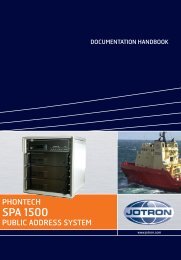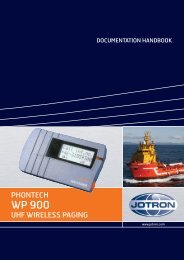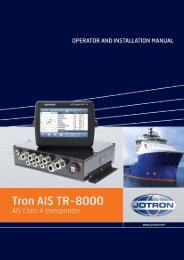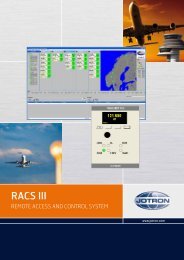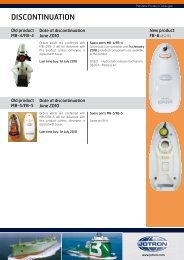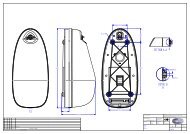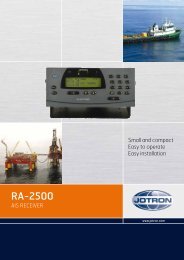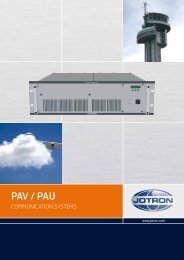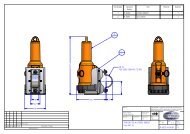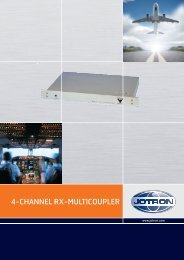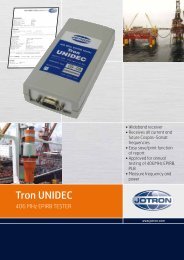Operators and Installation Manual RA-2500 AIS Receiver.pdf - Jotron
Operators and Installation Manual RA-2500 AIS Receiver.pdf - Jotron
Operators and Installation Manual RA-2500 AIS Receiver.pdf - Jotron
Create successful ePaper yourself
Turn your PDF publications into a flip-book with our unique Google optimized e-Paper software.
3. There should not be more than one antenna on the same plane. The <strong>AIS</strong> VHF antenna<br />
should be mounted directly above or below the ship's primary VHF radiotelephone<br />
antenna, with no horizontal separation <strong>and</strong> with a minimum of 2.8 meters vertical<br />
separation. If it is located on the same plane as other antennas, the distance apart should<br />
be at least 10 meters.<br />
4.1.3 GPS/VHF combined antenna<br />
See figure 4.1.3. Select a location out of the radar beam. The radar beam will obstruct or prevent<br />
reception of the GPS satellite signal.<br />
There should be no interfering object within the line-of-sight to the satellites. Objects within lineof-sight<br />
to a satellite, for example, a mast, may block reception or prolong acquisition time.<br />
Mount the antenna unit as high as possible. Mounting it this way keeps it free of interfering objects<br />
<strong>and</strong> water spray, which can interrupt reception of GPS satellite signal if the water freezes.<br />
Horizontal separation distance:<br />
VHF antenna for <strong>AIS</strong>:<br />
Other VHF antenna<br />
or GPS antenna<br />
>aa meters<br />
Figure 4.1.3a, Example of horizontal distance between antennas<br />
82694_Op&Ins MAN_<strong>RA</strong><strong>2500</strong>_D 4-2



